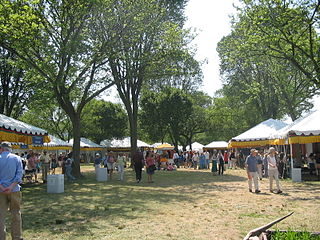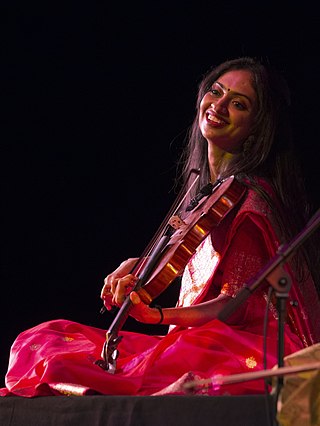Related Research Articles

Vishwa Mohan Bhatt, known professionally as V. M. Bhatt, is an Indian Hindustani classical music instrumentalist who plays the Mohan veena.
Saptak means "gamut" or "the series of seven notes". It denotes the set of swaras i.e. Shadja (Sa), Rishabha (Re), Gāndhāra (Ga), Madhyama (Ma), Panchama (Pa), Dhaivat (Dha), Nishada (Ni), Shadja (Sa) which comprise a musical scale in Indian classical music. In Sanskrit, saptak literally means "containing seven" and is derived from the Sanskrit word Sapta which means "seven". The Saptak comprises the Sapta Svaras, i.e. the seven svaras or the seven notes of classical music.

National Institute of Technology Patna, formerly Bihar School of Engineering and Bihar College of Engineering, is a public engineering institution located in Patna in the Indian state of Bihar. It was renamed as NIT Patna, by the Government of India on 28 January 2004. NIT Patna marked its humble beginning in 1886 with the establishment of pleaders survey training school which was subsequently promoted to Bihar College of Engineering Patna in 1924. This made this institute the 6th Oldest Engineering Institute of India. It is an autonomous institute functioning directly under Ministry of Education, Government of India.
Svara is a word that connotes simultaneously a breath, a vowel, the sound of a musical note corresponding to its name, and the successive steps of the octave or saptaka. More comprehensively, it is the ancient Indian concept about the complete dimension of musical pitch. Most of the time a svara is identified as both musical note and tone, but a tone is a precise substitute for sur, related to tunefulness. Traditionally, Indians have just seven svaras/notes with short names, e.g. saa, re/ri, ga, ma, pa, dha, ni which Indian musicians collectively designate as saptak or saptaka. It is one of the reasons why svara is considered a symbolic expression for the number seven.

According to the 2011 national census, the population of Ahmedabad was declared to be 7,214,225. This figure was only limited to the municipality region. The total population of the Ahmedabad Urban Agglomeration came to 7.2 million people. There were 886 females to every 1000 males in 2001. Now there are 904 women to 1000 men in 2011. Ahmedabad had a literacy rate of 79.89% in 2001 which rose to 89.62 percent in 2011. Out of this, male and female literacy are 93.96 and 84.81 percent as of 2011 census. According to the census for the ninth plan, there are 30737 rural families living in Ahmedabad. Out of those, 5.41% live below the poverty line. There are 439,843 people who live in slums in the city. The majority of residents of Ahmedabad are native Gujaratis and speak Gujarati. There is also a sizable population of Punjabis, Marathis, Tamils, Sindhis, Malayalis and Marwaris who bring in their native language and culture to the city. The government institutions and military base near the city also bring peoples from across India. The city's population has increased in a major way following increasing economic expansion and modernization.

A music festival is a community event with performances of singing and instrument playing that is often presented with a theme such as musical genre, nationality, locality of musicians, or holiday. Music festivals are generally organized by individuals or organizations within networks of music production, typically music scenes, the music industries, or institutions of music education.
Raga Bihag is a Hindustani classical raga belonging to the Bilawal thaat. It is a melodious Raga for beginners as well as experts. Raga Bihag uses all seven music swars. In Bihag, both the Madhyams are used. The Shuddha Madhyam is more prominent; TeevraMadhyama is only used with Panchama in the phrase PA MA' GA MA GA.

The Smithsonian Folklife Festival, launched in 1967, is an international exhibition of living cultural heritage presented annually in the summer in Washington, D.C. in the United States. It is held on the National Mall for two weeks around the Fourth of July holiday. The Smithsonian Center for Folklife and Cultural Heritage produces the Festival.
The Saptak Annual Festival of Music is an annual thirteen-day Indian classical music festival held in Ahmedabad, India. It is organised by Saptak School of Music and takes place January first to the thirteenth every year, and is attended by hundreds of people.
Aditya Kalyanpur is an Indian Tabla Maestro. He belongs to the Punjab gharana.

Pandit Suman Ghosh is a Hindustani Classical Vocalist of the Mewati Gharana of Hindustani Classical Music. He is the founder and President of the Center for Indian Classical Music of Houston (CICMH).
Nandan Mehta was an Indian tabla player and music teacher from Ahmedabad who belonged to the Benaras Gharana of Hindustani classical music. He established Saptak School of Music and started Saptak Annual Festival of Music in 1980.

Vidushi Manju Mehta is an Indian classical sitar player.

Bharat Bhavan is an autonomous multi-arts complex and museum in Bhopal, India, established and funded by the Government of Madhya Pradesh.The architect of the Bharat Bhavan is Charles Correa. Opened in 1982, facing the Upper Lake, Bhopal, it houses multiple art galleries, a graphic printing workshop, a ceramics workshop, an open-air amphitheatre, a studio theatre, an auditorium, a museum of tribal & folk art, and libraries of Indian poetry, classical music & folk music.

Nandini Shankar is an Indian violinist who performs Hindustani classical music and fusion. She is the daughter of Sangeeta Shankar and granddaughter of N. Rajam.

Ragini Shankar is an Indian violinist who performs Hindustani classical music and fusion. She is the grand-daughter of the renowned Padmabhushan Dr. N. Rajam. and the daughter of Dr. Sangeeta Shankar

Pandit Ramdas Palsule is an internationally-acclaimed Tabla virtuoso from Pune, India. He is also an A grade artist of All India Radio and Doordarshan.

Shashwati Mandal is a Hindustani classical music vocalist. She is an exponent of the Gwalior gharana.

Lokesh Anand is an Indian shehnai player. Lokesh has been learning under Sangeet Martand Pandit Jasraj, Hence belongs to Mewati Gharana. He is empanelled with the Indian Council for Cultural Relations. The key characteristics of Anand's Shehnai playing are neat fingering techniques, command over tempo along with richness and clarity in sound. Lokesh performs solo and in duet and also does fusion.
Aayush Mohan is an Indian Classical Musician who plays the Sarod. He performs in the style of Maihar Gharana of Hindustani Classical Music. He is a four-time TEDx speaker and has worked towards creating cultural awareness in India. He frequently performs Jugalbandi(duet) with his brother Lakshay Mohan who is a Sitar player and the two are known as Mohan Brothers. Aayush Mohan and Lakshay Mohan are the first Indians to be invited to perform at the Grammy Museum, Los Angeles for the opening of the exhibition 'Ravi Shankar : A Life in Music'.
References
- ↑ "Saptak at 31: Music gods return to city". epaper.timesofindia.com. 24 December 2010. Archived from the original on 14 April 2016. Retrieved 4 April 2016.